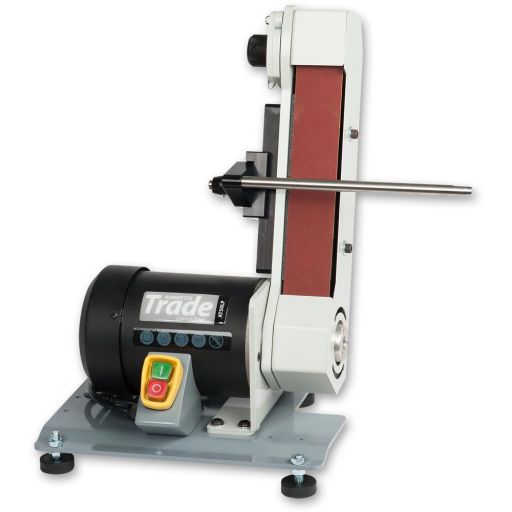I bought three Easywood tools on the advice of a club member who only uses these carbide tip tools ‘ I can’t manage with ordinary tools’, he says.Hi,
It's easy spending a great deal of money buying the best sharpening system and try for the ultimate sharpness but I wonder how many don't bother sharpening at all just switching to tipped tools which I don't think have been mentioned but I see a lot of. Recently I made three tipped tools at little cost the carbide tips bought in packs of ten through eBay. Because of the winter weather I've not yet really tried them out but hope to once I can get into the workshop without being frozen.
I've been around a bit and seen many instances where this or that is best; best chisels including Japanese types very expensive planes bought more for show than actual use; whilst restoring vintage valve radios some guys insisted on buying very expensive balanced valves for amplifiers saying they could tell the difference in sound?
Sorry if I'm diverting this interesting thread but what about the skill of the turner; an experienced turner can produce a very good finish on the work straight from the tool which is ground on less than perfect equipment but a novice using a perfectly ground tool could well produce a poor finish on the work.
How many spend more time sharpening chasing the perfect cutting edge than actually doing turning; sharpening and collecting tools can become an obsession; once the work is sanded and finished who could tell what tools had been used to create it?
What do production woodturners use to sharpen their tools after all time is money to them.
I believe tipped tools stay sharp up to 40 times longer than HSS tools; I've used TC tooling for years on my lathes and in my routers but have only just got around to spending time in the workshop although the time has been cut short by our dire climate. A razor sharp HSS tool won't stay sharp for long hitting bark or knots.
Buying tipped turning tools can be expensive but making my own is interesting and not difficult at all.
Obviously the person with the money has the choice of what to buy; I'm just a tight Yorkshireman who likes to make his own tools and even machines at a fraction of new prices for something not as good. Just a thought so please don't jump all over me.
Kind regards, Colin.
View attachment 99886
My new tipped tools; two are finished the third still needing the handle but finished after the picture was taken; What's the difference between these I made and those bought from a tool stockist apart from price? Round bright steel bar stock for shafts; 2" square blanks for handles; a bit of steel pipe for ferrules and the tips plus the enjoyment of making and using my own tools.
View attachment 99887
The three tip profiles to date but more can be added later if required. I drilled and tapped for two of the tips but just because I have the kit I brazed the third tip; I have a high speed diamond hone I made using a very cheap router and diamond cup wheel so I can even sharpen my carbide tooling.
I have a large selection of turning tools but generally only use about three of them
Has anyone some spare warm weather I could scrounge then I can start making shavings again.
(He’s been ClubTurner of the Year a couple of times, so he’s no mug).
They are certainly easier to use than traditional tools, but, in the long run, I think they are an expensive option. The initial outlay for the tools is over £120 each (slightly cheaper but inferior makes are available) The replacement tips cost between £15 and £20, and in my experience don’t last that long. For the cost of 3 of these tips you can buy a traditional tool made by a decent maker. You can continually sharpen the traditional tool (using whatever method suits you) and it will last a long time. I know Craft Supplies USA reckon you can resharpen carbide tips using a diamond stone, but, having tried it, I don’t think you can recreate the edge found on the new tip.
Having laid out a shed load of cash on these tools, I now only use them occasionally. I have persevered with the traditional tools -catches and all- and am now fairly confident in their use. As i’ve noted previously, I keep them sharp with the ProEdge kit.
My club friend produces some fantastic work, so I suppose that it doesn’t really matter what tools you use, provided they work for you. Certainly carbide tools have a place in turning (hollowing springs to mind) and my decision to go with traditional tools was a largely economic one, allied, I confess, to a bloody minded determination to master traditional tools.
I am comparatively new to turning and I’m sure there will many experienced turners who will disagree with me, but I have learned that, as in most crafts ,woodturning is full of different ideas. Wherever there are 3 turners gathered together, there will be 4 opinions!
Best wishes to everyone for the New Year.
D.
Last edited:























